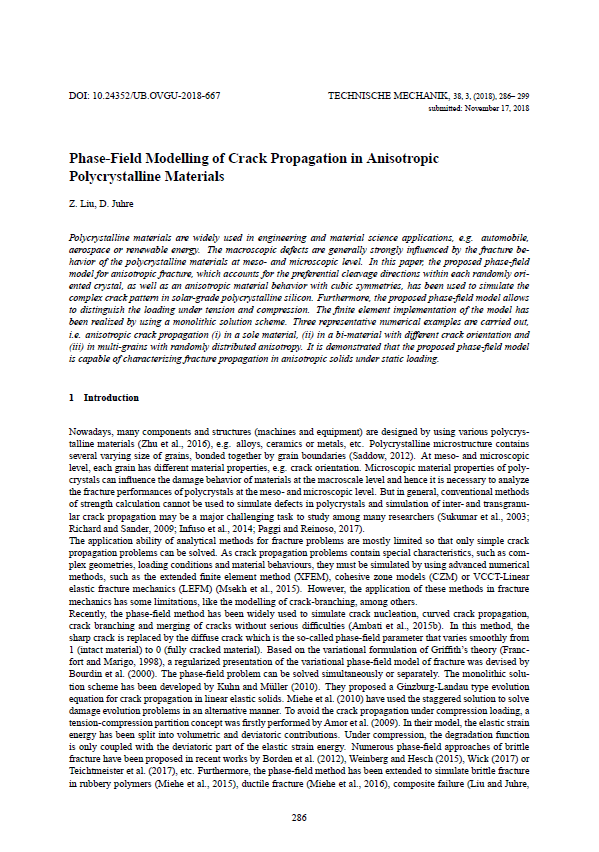Phase-Field Modelling of Crack Propagation in Anisotropic Polycrystalline Materials
DOI:
https://doi.org/10.24352/UB.OVGU-2018-667Abstract
Polycrystalline materials are widely used in engineering and material science applications, e.g. automobile, aerospace or renewable energy. The macroscopic defects are generally strongly influenced by the fracture behavior of the polycrystalline materials at meso- and microscopic level. In this paper, the proposed phase-field model for anisotropic fracture, which accounts for the preferential cleavage directions within each randomly oriented crystal, as well as an anisotropic material behavior with cubic symmetries, has been used to simulate the complex crack pattern in solar-grade polycrystalline silicon. Furthermore, the proposed phase-field model allows to distinguish the loading under tension and compression. The finite element implementation of the model has been realized by using a monolithic solution scheme. Three representative numerical examples are carried out, i.e. anisotropic crack propagation (i) in a sole material, (ii) in a bi-material with different crack orientation and (iii) in multi-grains with randomly distributed anisotropy. It is demonstrated that the proposed phase-field model is capable of characterizing fracture propagation in anisotropic solids under static loading.





